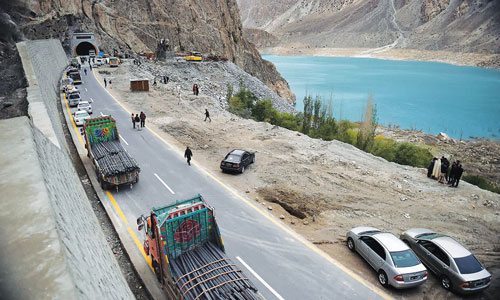To free a country from such pressures, it is important to build an independent national economy which is free from dependence on others and which stands on its own feet. The economic independence of a country is achieved by developing its industrial, agricultural and services’ capacity that increases economic growth, trade, foreign exchange earnings and employment which enhances individual incomes and prosperity. The economic self-reliance thus achieved enhances a country’s economic and military power, and makes it more sovereign in conducting its domestic, foreign and defence policies.
At the time of its independence in 1947, being short of the economic and defence resources, Pakistan became a part of the US-led cold war alliance, and hence it started getting the required economic and defence aid/loans from the World Bank, IMF, ADB and the US. In the Ayub Khan’s era, 1958 to 1968, through intensive industrialization and modernization of the agriculture sector, the government was able to achieve and maintain above six percent economic growth for six to eight years. That is why, in the 1960s, Pakistan was economically much ahead of the present Asian economic tigers.
Then, from 1969 to March 2018, all the successive Pakistani governments have failed to utilize the foreign aid/loans for attaining and maintaining a high economic growth rate to free the country from the foreign dependency. The governments also failed to control the wastage of the foreign money due to their lavish non-developmental spending and by failing to control nepotism and widespread corruption. These faulty policies of the governments also resulted in amassing the foreign debt.
For example, according to the News and the Tribune dated 11 October 2020, while at the end of December 1969, the external debt of Pakistan was US $ 3 billion, by March 2018, Pakistan’s total foreign debt had mounted to US $ 91.7 billion. Whereas in 1977 (last year of Z. A. Bhutto’s government) the total debt was US $ 6.3 billion, in 1999, (end of the Nawaz Sharif 2nd government) the total debt had risen to US $ 36.5 billion. At the end of June 2007, (last year of Gen. Musharraf’s government), the loans had soared to $40.5 billion.
By June 2013 (the last year of the PPP government), the debt had risen to US $ 61 billion. By end March 2018 [the last year of the PML (N) government] the foreign debt had surged to US$ 91.7 billion. In the overall perspective, whereas the foreign debt had increased by US $ 4 billion in Gen. Musharraf’s time (1999-2008), during PPPs time (2008 -2013) the debt rose by US $ 20 billion and in PML (N)’s time (2014 to 2018) the debt had increased by US $ 30 billion.
In view of the above dismal economic scenario, in July 2018, when the PTI took over the government, Pakistan was required to pay back the US $ 7 billion per year as the instalment of the loan. For this purpose, the government had to take loans from the friendly countries and it had to go to the IMF also to get additional loans to run the government affairs. The situation made the government realize that while an economically weaker Pakistan was vulnerable to the foreign political blackmailing, India was getting encouraged to militarily threaten Pakistan.
Therefore, it is being felt by the Pakistani decision makers that Pakistan should attain economic self sufficiency and independence within a minimum possible time to be able to become an economically and defence-wise a strong and independent country to exercise its sovereignty and to ensure the economic welfare of its people. In this context, the CPEC- based economic development is being considered as a grand opportunity to attain economic independence in a major way within the shortest possible time frame.
As the Chinese-financed CPEC would be a network of roads, railways, ports, power plants, pipelines, industrial zones and cooperation in agriculture, its development is going to accrue many advantages related to the economic development of Pakistan, that will help it in achieving an economic independence to the required degree, although in this globalized world, becoming totally independent of foreign influences may not be possible. Thus, the CPEC can facilitate Pakistan in attaining economic self-reliance in the following ways.
The CPEC energy projects and gas pipelines/transmission lines will be a source of ending Pakistan’s energy shortages, as these have already added about 4000MW to the national grid and another 7000 MW will be added soon. The availability of energy will generate a lot of economic activity, which will increase Pakistan’s economic growth. The CPEC- related industrial zones will add to the industrial growth, which will increase Pakistan’s exports and foreign exchange earnings. The network of roads, railways, ports and fibre optic loaded communications will facilitate Pakistan’s domestic/foreign trade and will also earn freight income for it. Pakistan’s cooperation with China in industry and agriculture will modernize these fields with the increased production and transfer of technology.
The CPEC is likely to increase Pakistan’s economic growth and employment opportunities on a large scale which will help Pakistan in multiplying its foreign exchange earnings thus enabling it to pay back its existing loans easily, and it will also not require to take any more foreign loans. The CPEC-related high and sustainable economic growth and employment opportunities will also enable Pakistan to kill poverty and achieve prosperity. Therefore, it looks imperative for Pakistan to complete the construction of the CPEC in time.
































